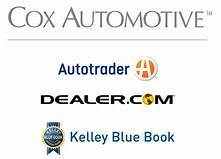Auto News Update From Cox
 |
The sales estimates from Kelley Blue Book show that electric vehicles accounted for approximately 8% of industry sales in the second quarter, higher than the 7.1% share in the first quarter and the 7.2% recorded in Q2 last year. And while sales volume in Q2 was higher by more than 11% year over year, EV sales growth today is far less dynamic than it was in 2022. As Stephanie added, “We remain bullish on electric vehicle sales in the long term. As EV infrastructure and technology improve, and more models are launched, many shoppers sitting on the fence will eventually choose an EV.”
HEVs and PHEVs, however, seem to be grabbing the spotlight. While our team does not have a full Q2 sales report of HEV and PHEV sales, we did share data based on an analysis of registrations through Q1 in our recent Mid-Year Review. As the chart on slide 27 illustrates, the share of “electrified” vehicles on U.S. roads continues to increase. In Q1, nearly 18% of vehicles sold were electrified in some fashion – a diverse mix of hybrids, plug-in hybrids and EVs.
The real growth is in basic hybrid models, with Toyota’s commitment turbocharging sales and all but making hybrid technology mainstream. The market will soon pass the milestone of 1-in-5 new vehicles sold including a sizeable battery pack – adding millions of batteries to our roads each year. And this long-term trend is exactly why Cox Automotive continues to invest heavily in end-to-end EV battery lifecycle services: EV Battery Solutions by Cox Automotive.
In case you missed it: Last week, our Industry Insights team presented the Q2 Manheim Used Vehicle Value Index (MUVVI) call, providing a deep-dive into the wholesale and retail used-vehicle market and an update to our full-year forecasts. A replay of the session has been posted in the Newsroom.
Generally speaking, used-vehicle prices at wholesale have been drifting lower since reaching an all-time high in January 2022. Our team reported last week wholesale prices in June were down nearly 9% year over year and lower by 23.9% from the all-time high in early 2022. Used retail listing prices have mostly followed suit and were lower last month by more than 7% compared to June 2023.
But as our team noted on the call, depreciation trends were clearly slowing, and the long slide was likely coming to an end. Cox Automotive Chief Economist Jonathan Smoke: “We think the decline may be nearing its floor, which should help stabilize the market through the summer months and rebound in the back half of the year.” Our mid-July measure of wholesale used-vehicle values was published this morning, and Senior Director Jeremy Robb will be providing an update on market dynamics at the end of the week.
Also on the MUVVI call last week, Brad Burns, assistant vice-president, Vehicle Information at Manheim, shared his thoughts on how advanced photographic capability coupled with machine learning has changed the vehicle inspection process, and we will have more to say about that in the coming weeks.
|
|


